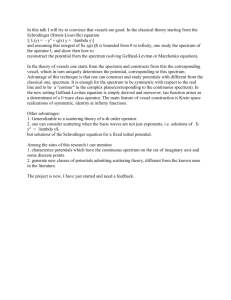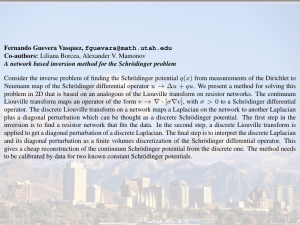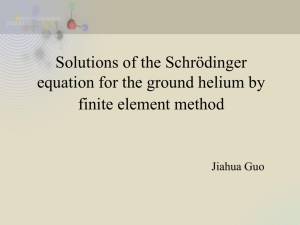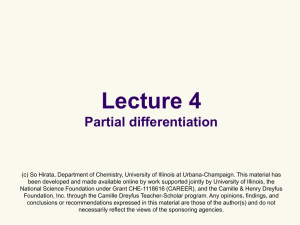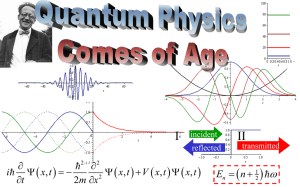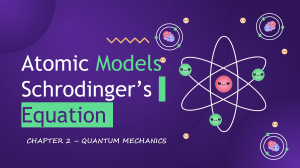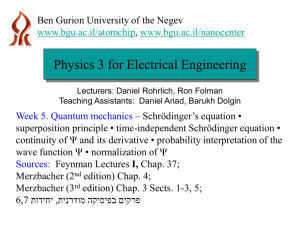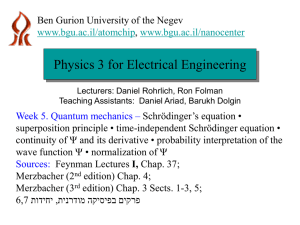S.Kuchin, Analitical Solution the Radial Schrodinger Equation for the
advertisement
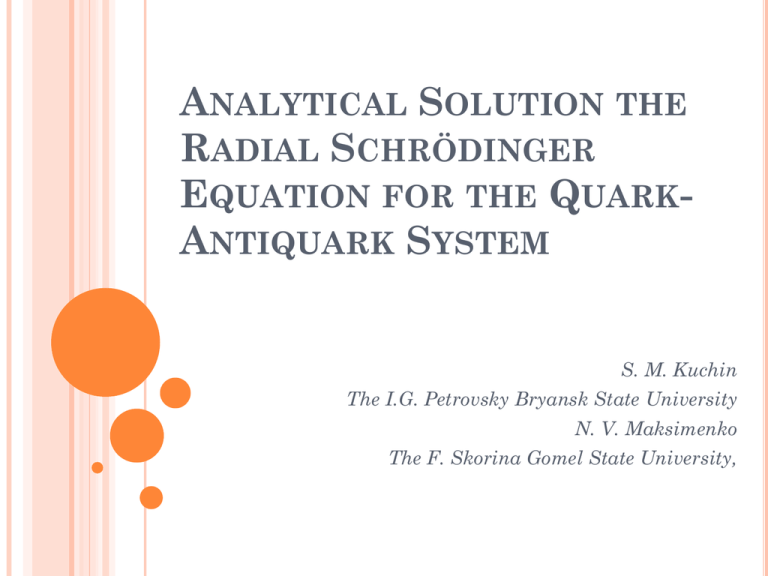
ANALYTICAL SOLUTION THE RADIAL SCHRÖDINGER EQUATION FOR THE QUARKANTIQUARK SYSTEM S. M. Kuchin The I.G. Petrovsky Bryansk State University N. V. Maksimenko The F. Skorina Gomel State University, INTRODUCTION The solution of the spectral problem for the Schrodinger equation with spherically symmetric potentials is of major concern in describing the spectra of quarkonia. Potential models offer a rather good description of the mass spectra of systems such as a quarkonium, a charmonium, etc. In simulating the interaction potentials for these systems, confining-type potentials are generally used. The holding potentials can be of any form. For instance, a variety of this type of potential is the so-called Cornel potential with two terms one of which is responsible for the Coulomb interaction of quarks and the other corresponds to a confining potential. Though this potential, proposed to describe quarkonia with heavy quarks, has been used for a long time, nevertheless the problem of finding the interquark potential still remains incompletely solved. To solve this problem is necessary both for finding the mass spectrum of bound states and for describing the electromagnetic characteristics of mesons. Using the Nikiforov–Uvarov method, widely used to solve Schrodinger equations, we obtain asymptotic expressions for the eigenfunctions and eigenvalues of the Schrodinger equation with the potential under consideration and, using the expressions obtained, we calculate the mass spectrum of quarkonia and 𝐵𝑐 mesons. The method used in this work allows one to obtain approximate analytical formulas for energy levels, which can be useful to analyze qualitatively the spectrum of a model system. THE NIKIFOROV–UVAROV METHOD THE SCHRÖDINGER EQUATION SUBSTITUTING THIS INTO THE RADIAL SCHRÖDINGER EQUATION, WE OBTAIN IN THIS CASE THE SOLUTION OF THE SCHRÖDINGER EQUATION THE CORRESPONDING 𝑅𝑛𝑙 𝑟 WAVE FUNCTIONS ARE THEN FOUND TO BE DEPENDENCE THE BINDING ENERGY OF THE QUARK MASS DEPENDENCE THE BINDING ENERGY OF THE QUARK MASS CONCLUSIONS Thus, in this work, the analytical expressions for the wave functions and energy eigenvalues of the Schrödinger equation with the Cornell potential. All calculations are carried out in good agreement with the available experimental data, and the process of determining the energy spectrum and eigenfunctions of the Schrödinger equation in this approach is much simpler than using the standard perturbation theory or other methods. The analytical solutions can be used not only to describe the mass spectrum of the quark-antiquark systems, but also other characteristics. Thank you for attention
